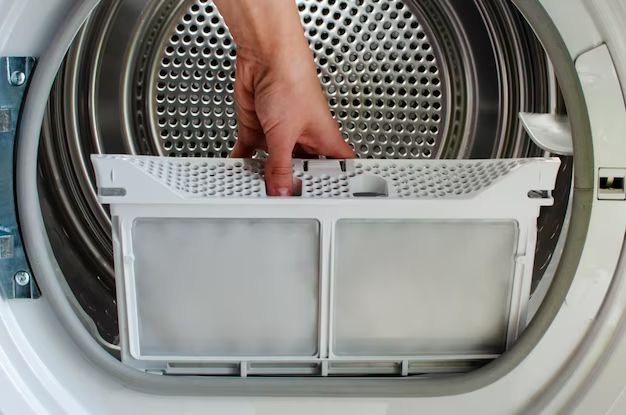Excess lint in a washing machine is a common problem that can be annoying and cause issues with your laundry. Here are some tips for getting rid of lint buildup in your washer:
Page Contents
Quick Answers
There are a few quick things you can try first to remove lint:
- Clean the lint filter/trap – This is located inside the washing machine drum. Pull it out and remove any lint clumps. You should do this after every load.
- Wipe down the washing machine – Use a microfiber cloth to wipe down the drum and any visible lint buildup areas inside the machine.
- Run a hot wash cycle with vinegar – Add 1-2 cups of white vinegar to the drum and run a hot water cycle with no clothes. The vinegar helps dissolve lint and cleans the inside.
- Use a lint remover product – Lint remover sheets or liquids can help scrub away lint when used in an empty wash cycle.
Root Causes of Lint Buildup
If you find your washing machine seems to generate a lot of lint constantly, there are a few common root causes:
- Older washing machine – Old washing machines tend to accumulate more lint in cracks and crevices over time.
- Overloading – Putting too many clothes into the washer at once does not allow adequate water and detergent to penetrate and dissolve lint.
- Insufficient detergent – Without enough detergent, lint can stick to fabric surfaces and redeposit on the drum.
- Washing lint-generating fabrics – Fleece, chenille, towels and synthetic fabrics tend to generate the most lint.
Thorough Lint Removal
For a more thorough lint removal, follow these steps:
- Clean the lint filter – Pull out and clean lint trap thoroughly after each load.
- Remove lint under the ring – Lint can build up under the rubber seal. Carefully pull seal back and remove all lint from this area.
- Wipe down gaskets & drum – Use a microfiber cloth and all-purpose cleaner to wipe away visible lint.
- Remove bottom panel – Unscrew the bottom panel to access built up lint underneath the washer. Use a vacuum hose to remove.
- Use a lint brush – Plastic-bristled lint brushes can dislodge lint in crevices and the barrel.
- Run tub cleaning cycles – Use tub cleaning or bleach cycles according to your machine’s recommendations.
- Replace pump filter – The pump filter catches lint and needs replaced if it becomes clogged.
- Vinegar wash cycle – Add 1-2 cups of vinegar and run a hot water cycle monthly.
- Leave door open – Leaving the door open after washes allows moisture to evaporate and prevents mold.
Preventative Measures
Here are some tips to help prevent lint buildup:
- Wash lint producers separate – Towels, fleece and chenille fabrics should be washed separately from lint collectors like corduroy.
- Use liquid detergent – Powder detergent can bind to lint and leave residue.
- Load washer loosely – Overloading presses lint into fabric crevices making it harder to rinse away.
- Wash with laundry balls – Lint-grabbing laundry balls added to washes can collect lint in the drum.
- Air dry lint producers – Line drying these fabrics can decrease lint redepositing in the washer.
- Clean the wash basket – Use a soft brush or cloth to wipe the basket after washing lint producers.
- Run lint prevention cycles – Some washers have special cycles designed to flush away lint.
When to Call a Repair Professional
If you’ve tried these troubleshooting steps and are still battling excessive lint, it may be time to call for service. Some signs it’s time for professional repair include:
- Visible gaps, holes or damage in lint filter or seal
- Excess lint leaking from door/seals into laundry room
- Lint detectable in drain lines or pump
- Washer not adequately spinning or draining
- Must clean filter after every single load
- Lint visible under drum in mechanism
A damaged or missing lint filter, deteriorating drum seals, clogged drains and impaired mechanical function can all contribute to a chronic lint problem. The repair service can assess the overall condition of the washer and identify necessary part replacements to stop excessive lint generation.
Conclusion
Excessive lint in a washer is usually solvable with consistent maintenance like cleaning the lint trap, washing lint producers separately, using lint removal products and periodically deep cleaning the drum interior. For severe recurrent lint, replacing worn washer parts may be required. Call in a professional repair technician if DIY efforts don’t resolve a chronic lint issue.
